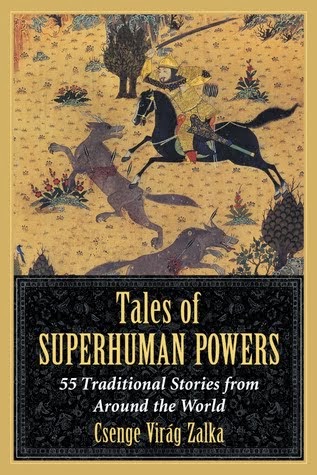Today is Folklore Thursday on social media! If you want to find out more, follow this link, or click on the #FolkloreThursday hashtag on Twitter! Hosted by @FolkloreThursday.
Hungarian fairy folklore (or what we managed to collect about it to date) is not as detailed and coherent as some other cultures' (take Ireland, for example). There is also a difference between the fairies that feature into folk beliefs, and the fairies that appear in folktales. And yet, out of the few folk creatures that we do have, fairies are definitely a fan favorite.
Here are 7 things you should know about them:
1. They are called 'tündér' (pl. 'tündérek'). They are mostly female, and ruled by a queen called Tündér Ilona.
2. They are mostly water-related creatures. The richest fairy folklore can be found in the riverlands of northwestern Hungary (Szigetköz, Csallóköz - large islands in the Danube). There are also several fairy legends from Transylvania.
3. They are human-like. Much like the Elves in Tolkien's fantasy, they appear like very beautiful humans, and they can also marry (and breed) with human men. In several stories they live in castles (legends of existing castles often attribute their building to the fairies), and in some cases they have underwater palaces or crystal domes and luscious gardens.
4. They are closely related to gold. In the riverlands people used to wash gold from the water, and they told stories about why it was so plentiful. According to some tales, the fairies brushed their golden hair, and it fell into the river, or sprinkled gold dust as they walked by. According to others, river gold is actually fairy urine.
You're welcome.
5. They are not always nice. They can be vain, or fickle, or even cruel sometimes. There is one famous folktale where Tündér Ilona is actually the villain, trying to stop a Dwarf princess from marrying the human she loves.
(Dwarves are even more rare in Hungarian stories)
6. They left. There are multiple stories from Hungarian tradition about the fairies leaving, and the theme seems to be universal across the country from Transcarpathia to Csallóköz. Some say the fairies left because of the advance of Christianity (they hated the sound of church bells) or just disappointed by the cruelty of humans. In one story I found they were hunted out by people who thought they were evil. According to some tales, they moved to the sky, which is why one name we have for the Milky Way is "The Road of the Fairies."
7. Some folklorists have suggested that Hungary, similarly to neighboring Slavic peoples, probably had the belief in "fairy sorcerers" at some point - people who could communicate with the fairies and drew magic powers from them to mitigate curses or other supernatural phenomenons. There is no solid proof of the existence of such a belief anymore, but we do have a wealth of wizards, sorcerers and magicians in our folklore, so it is not entirely impossible either.
I am currently working on compiling an English language collection of some great Hungarian folkales that feature fairies. Among other things. It is shaping up to be a fun project!
Subscribe to:
Post Comments (Atom)








I can't wait to see what the collection will look like when it's done, as a folklore fan from the USA
ReplyDeleteI second Sparkling Blue! That sounds like it will be an amazing collection. :) Hungarian faeries/fairies sound a lot like nymphs.
ReplyDeleteI third it.
ReplyDeleteI love your faerie tales and lore. I am Canadian of Hungarian decent. Love hearing these stories.
ReplyDeleteI had a dream last night where I saw the word ilona written in a strange script on a wall on a magical house. I had not heard of this before so I Googled it and this is what came up. Please write your book.
ReplyDeleteMy name is "ilona", my maker has always said it came to her in a dream. I am of Slavic decent and very drawn to spiritual forces and earth's energy as I get older. I really really loved your synopsis. Please keep posting
ReplyDelete